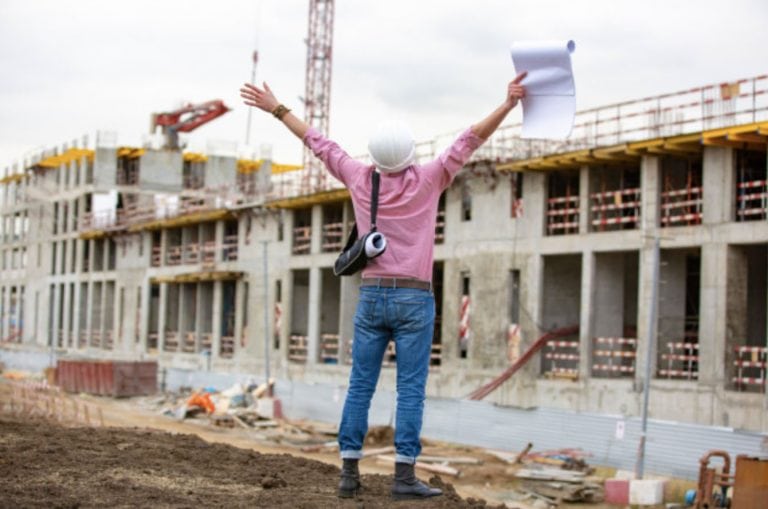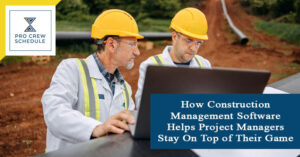Getting an accurate estimate for the projects you go into bid can give you a huge advantage over those who don’t. Estimate too high and the client will give the project to others. Estimate too low and you will encounter budget shortage as your operation goes on.
But it’s tough to get it right and we totally understand. There are no two projects that are exactly alike. However, your project estimate can be near the actual and a construction software like Pro Crew Schedule can certainly help. The data it generates from previous projects can give you an idea of how much labor, material, and operational costs you should expect on the new project. Of course, you’ll need to ask for quotes from suppliers and involve your project manager to get closer to the real budget you need.
Apart from that, we have other tips that will greatly help you in getting more accurate estimates.
1.Plan Each Phase in Detail and Budget Accordingly
You can’t bid what you don’t know. You have to go into great detail so you can come up with an accurate estimate.
Consider the various components of the project, the materials you need, the number of hours you need to complete the project, the equipment required, and anything else that you need in your operation that requires a budget. Break down the project and consider the cost of each individual part to ensure that you won’t miss anything when making an estimate.
2.Avoid Unit Cost Estimates
You may be tempted to estimate elements in your construction project by unit cost, but be aware that this isn’t the most accurate option. Estimating based on unit cost or order of magnitude per square foot can be a bad choice for accurate estimating. This is because there are many variables specific to your project and conditions per square foot may not be consistent.
To make a more accurate construction project estimate, we recommend you start by making a list of all the items needed for the job. Identify each piece of assembly required to complete the job and attach a unit cost to them. Doing this will help you reach a more accurate project estimate.
3.Prepare a Master Checklist
Plan the project efficiently so you can stay on track and ensure that it is fully completed. So before you go to bidding, prepare a master checklist where you jot down all the necessary steps and items needed in the project. This won’t only help you organize the job but will also help you estimate all costs related to these items and steps.
Using construction software like Pro Crew Schedule should make the job easier and help you come up with better estimates. The advantage of having all the information in one place is being able to track all costs and the reduction in errors is well worth the investment.
4.Define Hourly Labor Cost and Specialty Labor
You have to determine and declare the rate you want to ask for your crew members and specialty labor. Go into detail by breaking the cost down to normal wages and benefits. But when you decide on rate, consider the federal and state payroll costs. Finally, consider how many employees you will need to bring into this project and sum up all the labor costs.
5.Define Possible Risks and Factor In Their Costs
Risks have their corresponding costs too. When problems arise, you will either have to halt the operation and extend the working days or continue with Plan B. So when you start the estimating process, you have to consider what could possibly go wrong during construction. Factor these risks into the cost and timeline of the project. It may not be easy to foresee mishaps but you can look into your previous projects to get an idea. And this is an area where cost estimating software can help you immensely.
6.Understand Materials Pricing and Fluctuations
We know that we always suggest for you to look back into previous projects to get an idea on the prices of materials, equipment, and so on. However, consider the fact that material costs may change and you have to pay close attention to factors that can affect pricing when estimating costs.
Is the material you want to use in demand or not? If it’s not, then the price may be lower.
Are there changes in the delivery charge? If yes and the difference is too big, then you might want to consider investing in your own trucking.
There are so many factors that can affect the cost of materials. Always include delivery charges and other fees that are usually included in procuring materials. Always get quotations. Do not assume that the price of a sack of cement in your previous project is still the same in the present. If the items you need to buy will need storage rental or maintenance costs, then add them too when you are making a project estimate.
7.Determine Equipment Needs
Your equipment is among the most expensive investments in a construction project. So after planning the project in full, you should determine the equipment you will need to complete the tasks. Define the type, size, quantity of equipment. You also need to decide whether you will rent the equipment out or buy them. If you already have the equipment, then define the repair and maintenance costs.
8.Bid More on Jobs with High Chances of Success
Project planning and estimating is such a grueling task. One day may not be enough to finish them all. So we recommend bidding only on jobs you are confident enough that you can win. But how can you know what jobs have the highest chances of success? Well, you should have records of your previous bids. From there, start tracking what type of construction orders you did well on bids.
Diligently go over the project too. This way, you will know whether the project is worth bidding or you are just wasting your time trying to prepare a plan and estimate. It is not worth spending money on something if it doesn’t have a high chance of success. Finally, if you can’t be profitable at the bid level of your competitors, then it’s time to move on.
9.Check with Suppliers for your Estimate
Like we already mentioned, always involve your material supplier when making a cost estimate for materials. Materials are important elements in completing a project so you have to get the cost right when going on a bid. Having the right materials, too, for the job is critical for your success. So reach out to your suppliers for their advice.
By working with your suppliers at the initial stage of trying to get a job, they can act as advisors and help you find products that will not only meet the project’s design goals but also maximize budget and be efficient during construction.
Help your supplier understand the objectives of the project and your plan on how to complete it. This way, they can give you their insights on which materials are best for your plans. Be open and transparent with your vision to ensure they are on the same page.
Conclusion
Your success starts with accurate project estimates but depends on solid execution. This is why it’s important to get the estimate right before you push through with the operations. Your budget will depend on your estimate, and like we said, when your estimate is way too low, then you’ll have problems asking for additional funds from your clients.
Your second concern should be how to stay within the estimate. One of your goals, when you win a project, is to work on your estimate (which will probably be your project budget too).
Accurately collect field data (from your suppliers and from your own experience) to come up with a realistic estimate. Using intuitive mobile and desktop construction project management software won’t only help you with your estimation but can make you easily track critical field data throughout the duration of your project. Pro Crew Schedule is a vital addition to your construction technology lineup.





